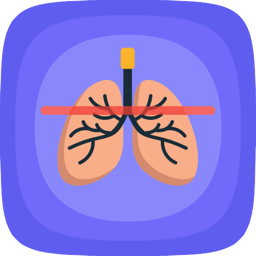Why Radiology?
Clinical Radiology is an often overlooked specialty, with limited exposure throughout medical school and foundation training. However, it doesn’t take long to realise how much it has to offer as a career.
What is a Clinical Radiologist?
According to the Royal College of Radiologists (RCR), a radiologist is a “specialist doctor who is trained to interpret medical images in order to diagnose, treat and monitor diseases or injury”. Radiologists have to apply advanced knowledge of anatomy and pathology to x-rays, CT, MRI, and PET scans to solve clinical questions. The traditional view of the radiologist as someone who sits in a dark room and looks at scans all day is long out of date; radiology is an exciting and rapidly advancing specialty at the forefront of medical technology. Almost all medical specialties rely on radiologists, not only for diagnosing conditions that are not apparent clinically but also for performing minimally invasive procedures, preventing unnecessary radiation exposure, and guiding treatment decisions as part of a multi-disciplinary team (MDT). Just think, when was the last time you saw an inpatient in any specialty that hadn’t had some form of medical imaging?
Why Pursue a Career in Radiology?
Below are just a few reasons why you might consider a career in radiology:
- Diagnostics - Radiologists are often the first doctors in the team to make the initial diagnosis. This can be very satisfying and hugely impacts a patient's journey and treatment planning.
- Technology - Radiology will be the first specialty to integrate many new and exciting technologies, such as artificial intelligence (AI). Far from making the role of the radiologist redundant, AI will streamline the workload of radiologists, improve diagnostic capacity and automate some of the more mundane tasks. Also, radiologists have the best computers in the hospital!
- Variety - A career in radiology allows you to have a truly diverse job plan. If you want a patient-facing role, then you can do lots of ultrasound lists and procedures. If not, you can focus on reporting and contributing to MDT meetings. If you want a practical and high-octane career, then you can train to become an interventional radiologist. There is a role for any personality, and you’ll be surprised how much time is spent with patients.
- Training - Radiology is well-known for having an excellent training programme. Forget being a TTO machine on the ward; in radiology, you’ll have lots of 1:1 consultant supervision, and you won’t be independently reporting scans for several years. There is also an option to train at an ‘academy’, which is more classroom-based and relies on simulation (which has been shown to accelerate core competencies and be a better learning environment). This is why Radiology is consistently ranked amongst the highest specialties for satisfaction in the GMC surveys. Furthermore, the training is run-through, meaning you know which deanery you’ll be in for 5 years and don’t have to go through another round of applications midway through your training - once you’re in, you’ll go straight through to consultant level!
- Prospects - Who wants to complete their training only to find they can’t get a consultant job in the area they want, or that they have to do a fellowship year to make themselves competitive? With radiology, there is a huge shortage of consultants, giving you much more control over where you settle down.
References: - www.rcr.ac.uk. (n.d.). What does a clinical radiologist do? | The Royal College of Radiologists. [online] Available at: https://www.rcr.ac.uk/discover-and-explore/discover-radiology/what-does-clinical-radiologist-do. - High Level Fdingins. National Training Survey 2022. General Medical Council 2017. Available at: https://www.gmc-uk.org/-/media/documents/national-training-survey-summary-report-2022-final_pdf-91826501.pdf
GetIntoRadiology
Copyright © 2022 GetIntoRadiology.co.uk. All rights reserved.
